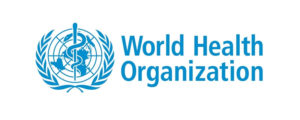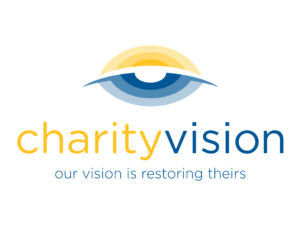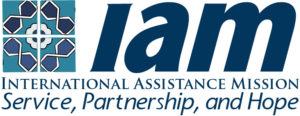When weighed against Afghanistan’s many other priorities – like rebuilding critical infrastructure, improving education and literacy, and ensuring adequate nutrition for all citizens, to name just a few – the question of eye care and vision health might not seem to be a particularly pressing issue. And yet, the numbers tell another story.
 According to the World Health Organization (WHO), approximately 400,000 Afghans are blind, and an additional 1.5 million have some degree of visual impairment. But what’s truly shocking is the following statistic: WHO estimates that 80 percent of these cases of blindness would be avoidable if proper eye care facilities could be established and maintained.
According to the World Health Organization (WHO), approximately 400,000 Afghans are blind, and an additional 1.5 million have some degree of visual impairment. But what’s truly shocking is the following statistic: WHO estimates that 80 percent of these cases of blindness would be avoidable if proper eye care facilities could be established and maintained.
In this respect, Afghanistan’s story is typical of the state of vision care in many developing nations. With limited facilities and few trained professionals, even conditions that are easily treatable can result in permanent vision damage and eventual blindness.
For example, in Afghanistan, the majority of instances of blindness (60 percent) is caused by cataracts (a clouding of the eye’s natural lens). Cataracts can be corrected by a very simple outpatient procedure. However, at present, Afghanistan only has the capacity to perform about 15,000 cataract surgeries per year. This leaves a backlog of approximately 200,000 cataract patients, many of whom live in rural areas.
Fortunately, a number of charitable organizations have made it a priority to improve the state of vision care in Afghanistan. Read on to learn more about three of them.
-
The Fred Hollows Foundation
What it is:
![]() The Fred Hollows Foundation is an Australia-based, international development organization dedicated to eliminating avoidable blindness. It was founded by Fred Hollows, an ophthalmologist who passed away in 1993, and his wife.
The Fred Hollows Foundation is an Australia-based, international development organization dedicated to eliminating avoidable blindness. It was founded by Fred Hollows, an ophthalmologist who passed away in 1993, and his wife.
The Fred Hollows Foundation now works in more than 25 different countries, pursuing Fred’s vision of a world in which no one is needlessly blind and everyone has access to quality and affordable eye care. To date, the Foundation has restored sight to more than 2 million people.
What it does in Afghanistan:
The Fred Hollows Foundation has been working in Afghanistan since 2006. At present, the Foundation has two major projects in the country. The first is the University Eye Hospital Project. Conducted in partnership with the Ministry of Higher Education, the Kabul Medical University, and the Kabul University Eye Hospital, it is aimed at increasing the number of skilled and trained eye care professionals in Afghanistan and building the public health system’s capacity to address eye health issues.
The second is the Afghanistan School Eye Screening Project. It aims to reduce high rates of childhood blindness in some of Afghanistan’s rural regions through education and awareness-building initiatives about childhood eye disease. In the future, the Fred Hollows Foundation hopes to work with the government of Afghanistan to coordinate, plan, and implement a national plan of action for improving the country’s eye health sector.
-
CharityVision
What it is:
 A US-based non-profit organization, CharityVision’s mission is to restore vision to people in developing nations. Founded in 1986, the organization has provided more than 375,000 charitable surgeries over the years to prevent cases of needless blindness. Today, CharityVision operates worldwide, performing about 36,000 sight-related procedures every year, and working with local networks in more than 25 countries.
A US-based non-profit organization, CharityVision’s mission is to restore vision to people in developing nations. Founded in 1986, the organization has provided more than 375,000 charitable surgeries over the years to prevent cases of needless blindness. Today, CharityVision operates worldwide, performing about 36,000 sight-related procedures every year, and working with local networks in more than 25 countries.
What it does in Afghanistan:
In Afghanistan and the other countries in which it operates, CharityVision uses a charitable model that is all about empowering local physicians and health practitioners. The organization partners with local doctors and care professionals, providing them with surgical equipment, supplies, and other resources and support free of charge.
In turn, the physicians provide their talent and time for such procedures as screenings or sight-restoring surgeries at no cost to the patients. This leads to a stronger local medical community and a robust network of health service systems that ensures that all patients in need can receive charitable surgeries free of charge.
-
The International Assistance Mission (IAM)
What it is:
 Founded in 1966 (the organization’s original name was the International Afghan Mission), IAM is one of the longest continually-serving NGOs in Afghanistan. Although IAM’s present focus areas include development, education, and general health initiatives, the majority of its work over the years has concentrated on eye care and vision health (at the request of the Afghan government).
Founded in 1966 (the organization’s original name was the International Afghan Mission), IAM is one of the longest continually-serving NGOs in Afghanistan. Although IAM’s present focus areas include development, education, and general health initiatives, the majority of its work over the years has concentrated on eye care and vision health (at the request of the Afghan government).
What it does in Afghanistan:
The NOOR program – National Organization for Ophthalmic Rehabilitation – is IAM’s longest-running initiative. It was launched, along with the organization itself, in 1966 in partnership with Afghanistan’s Ministry of Public Health. At present, the NOOR eye care program is the main provider of eye care in the country.
The program operates three referral hospitals: the NOOR Eye Care Training Center in Kabul, the Mazar Ophthalmic Center, and the Kandahar NOOR Eye Hospital. These are key hubs for the provision of affordable vision care. With the additional goal of building Afghanistan’s internal capacity for treating vision problems, NOOR also provides logistical support and financial oversight to two other hospitals, the Ministry of Public Health’s Central Polyclinic in Kabul, and the Ophthalmic Center in Herat.

